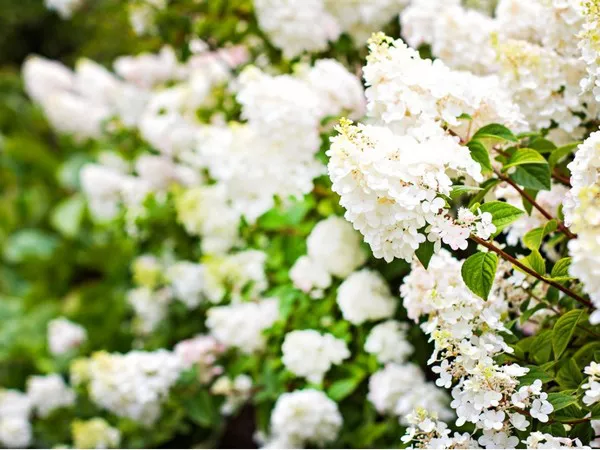Russet mites (Aculops cannabicola) are microscopic pests that can wreak havoc on flowering plants, causing discoloration, stunted growth, and reduced flower production. Successfully eradicating these pests from your flowers requires a combination of proactive measures, vigilant monitoring, and targeted treatments. In this comprehensive guide, we will explore various strategies to effectively get rid of russet mites and restore the health and beauty of your flower garden.
1. Understanding Russet Mites
Before diving into the eradication methods, it’s essential to understand the nature of russet mites. These minuscule pests measure around 0.2 mm and are difficult to detect without magnification. They feed on plant tissues by piercing the cells and extracting the sap, resulting in yellowing or bronzing of leaves, curling, and distorted growth. Russet mites thrive in hot, dry conditions and tend to infest flowers in greenhouses or indoor environments.
2. Early Detection and Monitoring
Regular monitoring is crucial for identifying russet mite infestations at an early stage. Inspect your flowers closely, paying attention to the undersides of leaves, leaf axils, and new growth. Look for signs such as yellowing, bronzing, or silvering of leaves, twisted or deformed growth, and tiny specks or webs. Use a magnifying lens or microscope to spot the presence of russet mites. Early detection allows for prompt action, preventing the infestation from spreading.
3. Isolation and Quarantine
If you discover russet mites on one or more flowers, immediately isolate the affected plants to prevent the mites from spreading to healthy plants. Remove the infested plants from the vicinity of healthy flowers and place them in a separate area or quarantine them. This step is crucial to prevent the mites from infesting the entire garden and provides an opportunity to focus on targeted treatments for the affected plants.
4. Pruning and Sanitation
Pruning and sanitation practices play a vital role in controlling russet mite populations. Begin by removing heavily infested leaves and flowers from the affected plants, carefully bagging and disposing of them to prevent further spread. Prune back excessively dense foliage to improve airflow and reduce favorable conditions for mite infestations. Regularly clean garden tools, such as pruning shears, with a solution of bleach or rubbing alcohol to avoid cross-contamination between plants.
5. Horticultural Oil and Insecticidal Soap
Horticultural oils and insecticidal soaps are effective tools for combating russet mites. These products work by suffocating the mites and disrupting their feeding activity. Choose a horticultural oil or insecticidal soap specifically labeled for use against mites and follow the manufacturer’s instructions carefully. Thoroughly spray the affected plants, making sure to coat the undersides of leaves and other hidden areas where russet mites tend to hide. Repeat the application as recommended by the product label.
6. Beneficial Predators and Insects
Introducing beneficial predators and insects can provide long-term control of russet mite populations. Predatory mites, such as Phytoseiulus persimilis, are natural enemies of russet mites and can significantly reduce their numbers. These beneficial predators can be purchased from reputable suppliers and released onto the infested plants. Follow the supplier’s recommendations regarding release rates and timing for optimal results. Additionally, attracting beneficial insects, such as ladybugs, lacewings, and predatory mites, to your garden can help maintain a natural balance and control mite populations.
7. Cultural Practices and Environmental Control
Creating an unfavorable environment for russet mites is essential for preventing their infestation and reducing their population. Implement the following cultural practices to discourage their presence:
Regularly water your flowers to maintain proper moisture levels. Russet mites thrive in dry conditions, so providing adequate hydration can make the environment less favorable for them.
Increase humidity levels in greenhouses or indoor environments by using humidifiers or misting systems. Higher humidity can impede mite reproduction and survival.
Avoid over-fertilization, as excessive nitrogen can stimulate lush, succulent growth, which is more susceptible to mite infestations. Opt for balanced fertilizers and follow recommended application rates.
Implement proper spacing between plants to allow for good airflow, reducing the chances of mites spreading from one plant to another.
Maintain a clean and weed-free garden, as weeds can serve as alternative hosts for russet mites. Remove any weeds promptly.
8. Repeat Treatments and Vigilance
Russet mites can be persistent, requiring multiple treatments to fully eradicate them. Follow up with the chosen control methods at regular intervals, as recommended by the product instructions or pest management specialist. Continuously monitor the plants for signs of russet mite resurgence and promptly address any new infestations. Regular vigilance and proactive measures are essential for successfully eliminating russet mites and preventing future outbreaks.
9. Professional Assistance
If your efforts to control russet mites prove challenging or if the infestation persists, seeking professional assistance from a local extension service or a licensed pest control expert is advisable. These professionals can provide expert advice, identify the severity of the infestation, and recommend targeted treatments or alternative solutions to effectively eliminate russet mites from your flowers.
10. Preventative Measures for Future Protection
Once you have successfully eliminated russet mites from your flowers, it’s crucial to implement preventative measures to minimize the risk of future infestations. Regularly inspect new plants before introducing them to your garden, quarantine them if necessary, and monitor them closely for signs of mite activity. Practice good garden hygiene, including regular pruning, cleaning tools, and maintaining overall plant health to create an inhospitable environment for pests.
In conclusion, effectively eliminating russet mites from your flowers requires a combination of early detection, monitoring, targeted treatments, cultural practices, and vigilance. By implementing these strategies and taking proactive measures, you can restore the health and vitality of your flower garden. Remember to closely follow product instructions, seek professional assistance if needed, and maintain preventative measures to protect your flowers from future infestations. With perseverance and dedication, you can successfully eradicate russet mites and enjoy thriving, pest-free flowers.


